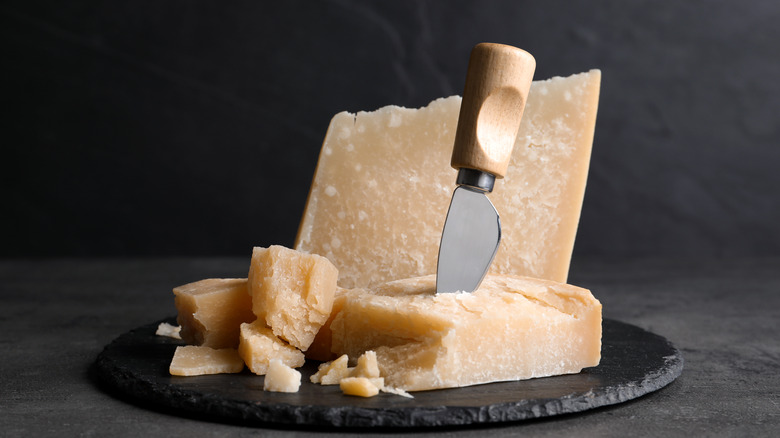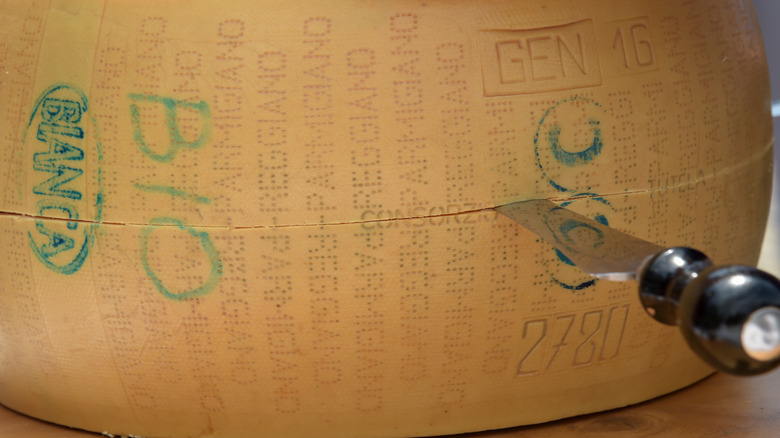The Reason Parmigiano Reggiano Cheese Isn't Served Neatly Sliced
For centuries, Parmigiano Reggiano has been capturing the heart of nearly everyone who tastes it. The perfect pasta topper, superior salty snack, or ideal ingredient to add umami flavor, there's never a wrong time to enjoy the cheese. Nutty and fruity with a distinctly granular texture, Travel Life explains that golden wheels of Parmigiano continue to be crafted by artisans adhering to production rules that dictate everything from where the cheese can be made to the diets of the dairy cows. To avoid dupes of the iconic Formaggio, buy from a reputable cheesemonger and always look for the protected designation of origin (PDO) seal on the packaging.
Interestingly, because you can find Parmigiano aged anywhere from 12 months to 90 months, Taste Bologna notes that over time, it can become more crumbly and complex, expressing flavor nuances of spice and even meat. Due to this range in flavor, Wine Enthusiast shares that the cheese can be paired with red, white, sparkling, or even dessert wine — but, we personally like Chianti. As for proper serving, the Consorzio del Formaggio Parmigiano Reggiano recommends letting refrigerated cheese rest at room temperature for about an hour, allowing the Parmigiano to reach an optimal temperature of about 60°F.
But, while you might be too busy enjoying the hard cheese to notice how it's cut, pieces of Parmigiano are never served in neat slices because there's a correct (and incorrect) way to slice it.
To serve Parmigiano, use a coltello a mandorla
There are all sorts of specialty knives out there, designed for everything from slicing bread to fileting fish and peeling vegetables. So, it's only natural that there's also a knife designated to cutting the perfect shard of Parmigiano Reggiano.
Given the dry, granular structure of Parmigiano Reggiano, Silvano Romani Parma explains that it's nearly impossible to cut Parmigiano into uniform slices, which is why a tool known as the coltello a mandorla is typically used. A traditional utensil used for centuries, Parma Shop states that the little knife has a wooden handle and a short almond-shaped blade that's thin on one side and thicker on the other.
A testament to being small, yet mighty, Consorzio del Formaggio Parmigiano Reggiano shares that an entire wheel of cheese can be split with coltelli a mandorla by pushing a number of the utensils into the rind to break off smaller chunks. However, the consortium also advises using the knife for serving. Simply insert the knife into a wedge of Parmigiano, turning it so that the cheese flakes off effortlessly.

